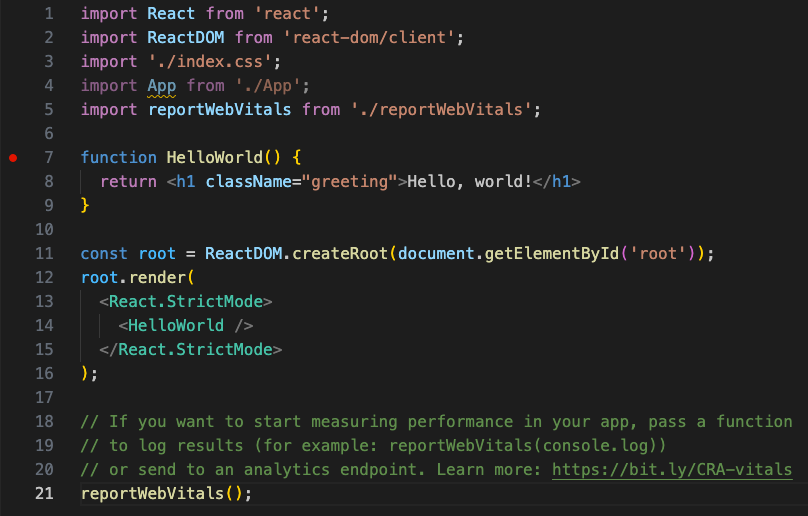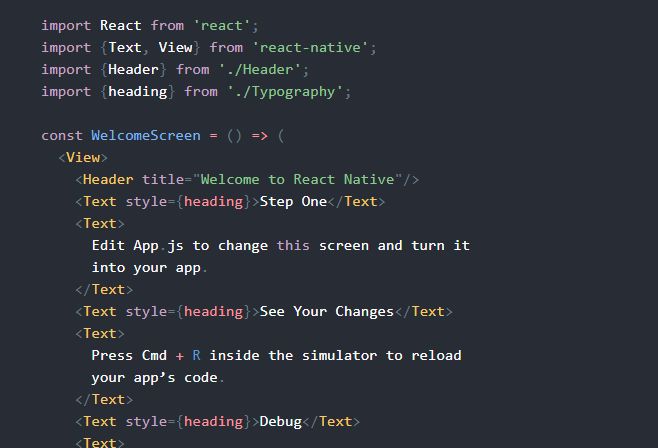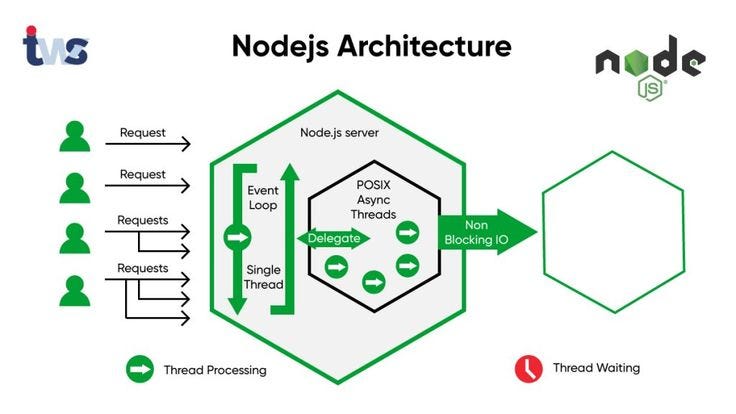
Mastering Modern JavaScript: A Comprehensive Guide to Best Practices in 2024
The Definitive Guide to Modern JavaScript Best Practices
JavaScript is the undisputed language of the web, powering everything from interactive front-end experiences with frameworks like React and Vue.js to robust back-end services with Node.js. Its versatility is its greatest strength, but it also presents a challenge: writing code that is not just functional, but also maintainable, performant, and secure. As the language evolves with annual updates (like the upcoming JavaScript ES2024), staying current with best practices is essential for any developer looking to build professional-grade applications.
This comprehensive guide will walk you through the essential JavaScript best practices that every developer should know in 2024. We’ll move beyond the JavaScript basics and dive into clean code principles, modern asynchronous patterns, secure DOM manipulation, and the powerful tooling that defines the modern JavaScript ecosystem. Whether you’re working on a MERN stack application or a simple vanilla JS project, these principles will help you write better, more reliable code.
Section 1: Writing Clean and Maintainable Core JavaScript
The foundation of any great application is clean, readable, and well-structured code. Modern JavaScript (often referred to as JavaScript ES6 and beyond) provides powerful features that help us move away from old, error-prone patterns and embrace a more declarative and predictable style.
Embracing Modern Syntax for Clarity and Scope
One of the most significant improvements in modern JavaScript is the introduction of let and const to replace var. The key difference lies in scoping. Variables declared with var are function-scoped and hoisted, which can lead to unexpected behavior. In contrast, let and const are block-scoped, meaning they only exist within the nearest set of curly braces ({}), making your code far more predictable.
Best Practice: Always prefer const by default. Use let only when you know a variable’s value needs to change. Avoid using var entirely in modern codebases.
Arrow functions (=>) are another cornerstone of modern JavaScript. They offer a more concise syntax for writing JavaScript functions and, crucially, they do not have their own this context. Instead, they inherit this from the surrounding (lexical) scope, which solves a common class of bugs found in older code, especially within event handlers or callbacks.
// Demonstrating block scope and modern functions
// Pitfall: Using 'var' in a loop
function checkVarScope() {
for (var i = 0; i < 3; i++) {
setTimeout(() => {
console.log(`var i: ${i}`); // Logs 'var i: 3' three times!
}, 10);
}
}
// Best Practice: Using 'let' for block scope
function checkLetScope() {
for (let i = 0; i < 3; i++) {
setTimeout(() => {
console.log(`let i: ${i}`); // Logs 'let i: 0', 'let i: 1', 'let i: 2' correctly
}, 10);
}
}
checkVarScope();
checkLetScope();
// Best Practice: Using Arrow Functions for concise syntax
const numbers = [1, 2, 3, 4, 5];
const squares = numbers.map(num => num * num); // Clean and readable
console.log(squares); // [1, 4, 9, 16, 25]Structuring Code with ES Modules
As applications grow, keeping all your code in a single file becomes unmanageable. JavaScript Modules (ES Modules) are the standard, browser-native way to organize your code into reusable, self-contained files. This practice improves organization, prevents naming conflicts, and allows build tools like Vite or Webpack to perform powerful optimizations like tree-shaking (removing unused code).

Best Practice: Break down your application into small, focused modules. A module should ideally do one thing well. For example, have separate modules for API calls, utility functions, and UI components.
// file: /utils/stringUtils.js
// This module exports two named functions.
export const capitalize = (str) => {
if (typeof str !== 'string' || str.length === 0) {
return '';
}
return str.charAt(0).toUpperCase() + str.slice(1);
};
export const truncate = (str, length) => {
if (typeof str !== 'string' || str.length <= length) {
return str;
}
return str.slice(0, length) + '...';
};
// file: /app.js
// This module imports and uses the functions from stringUtils.js
import { capitalize, truncate } from './utils/stringUtils.js';
const greeting = 'hello world, this is a long message.';
const shortGreeting = truncate(greeting, 20);
console.log(capitalize(shortGreeting)); // Outputs: "Hello world, this is..."Section 2: Mastering Asynchronous Operations with Promises and Async/Await
JavaScript is single-threaded, meaning it can only do one thing at a time. To prevent long-running operations like network requests or file I/O from blocking the main thread and freezing the user interface, JavaScript relies heavily on an asynchronous, non-blocking model. While callbacks were the original solution, modern JavaScript offers far superior patterns: Promises and Async/Await.
From Callback Hell to The Elegance of Promises
Promises represent the eventual completion (or failure) of an asynchronous operation and its resulting value. A Promise object can be in one of three states: pending, fulfilled, or rejected. This model allows you to chain asynchronous operations in a much more readable way using .then() for success and .catch() for errors, avoiding the dreaded “callback hell.”
The Power of Async/Await for Readability
While Promises are a huge improvement, async/await syntax, introduced in ES2017, makes asynchronous code look and behave more like synchronous code, making it even easier to read and reason about. An async function always returns a Promise. The await keyword can be used inside an async function to pause its execution until a Promise is settled. Error handling is done with standard try...catch blocks, which is a familiar pattern for many developers.
Best Practice: Use async/await for all asynchronous operations. It is the modern standard and leads to significantly cleaner, more maintainable code than chaining .then(). Always wrap await calls in a try...catch block to handle potential errors gracefully.
// Practical example: Fetching user data from a REST API
// This async function fetches data from a public API and handles potential errors.
async function fetchUserData(userId) {
const apiUrl = `https://jsonplaceholder.typicode.com/users/${userId}`;
try {
console.log(`Fetching data for user ${userId}...`);
const response = await fetch(apiUrl);
// fetch() doesn't throw an error for HTTP error statuses (like 404 or 500).
// So, we need to check the 'ok' status and throw an error manually.
if (!response.ok) {
throw new Error(`HTTP error! Status: ${response.status}`);
}
const userData = await response.json(); // .json() also returns a Promise
console.log('User Data:', userData.name, `(${userData.email})`);
return userData;
} catch (error) {
console.error('Failed to fetch user data:', error.message);
// In a real app, you might show a user-friendly error message in the UI.
return null;
}
}
// Using the async function
fetchUserData(1); // Fetches data for user with ID 1
fetchUserData(99); // This will trigger the error handling for a 404 Not FoundSection 3: Secure and Efficient DOM Manipulation
Interacting with the Document Object Model (DOM) is a core part of front-end JavaScript. However, direct DOM manipulation can be slow and, more importantly, can open your application to security vulnerabilities like Cross-Site Scripting (XSS) if not handled carefully. This is a primary reason why JavaScript frameworks like React, Svelte, and Angular are so popular—they abstract away direct DOM manipulation.
The Golden Rule: Never Trust User Input
XSS attacks occur when a malicious actor injects executable scripts into your webpage, which then run in the context of an unsuspecting user’s browser. The most common vector for this is when your application takes user input and renders it directly into the DOM without proper sanitization.

A common pitfall is using the innerHTML property to inject HTML content that includes user-provided data. This is extremely dangerous because it will execute any <script> tags contained within the string.
Best Practice: Avoid innerHTML whenever possible. To display user-provided text, always use textContent, which automatically treats the input as plain text and does not interpret any HTML. If you must render HTML from a trusted source, use safer methods like creating elements with document.createElement() and appending them. For rendering rich text from users, use a dedicated sanitization library like DOMPurify before inserting the content.
// Demonstrating secure vs. insecure DOM manipulation
const userInput = '<img src="invalid-source" onerror="alert(\'XSS Attack!\')">';
const commentContainer = document.getElementById('comments');
// 1. VULNERABLE METHOD: Using innerHTML
// This will execute the malicious onerror script.
const vulnerableComment = document.createElement('div');
vulnerableComment.innerHTML = `User comment: ${userInput}`;
// commentContainer.appendChild(vulnerableComment); // DO NOT DO THIS
// 2. SAFE METHOD: Using textContent
// This will render the input as plain text, neutralizing the script.
const safeCommentText = document.createElement('div');
safeCommentText.textContent = `User comment: ${userInput}`;
// commentContainer.appendChild(safeCommentText);
// 3. SAFE METHOD: Creating elements programmatically
// This is the safest way to build DOM structures.
const safeCommentStructured = document.createElement('div');
const label = document.createElement('strong');
label.textContent = 'User comment: ';
const content = document.createTextNode(userInput); // Creates a text node, which is always safe.
safeCommentStructured.appendChild(label);
safeCommentStructured.appendChild(content);
// commentContainer.appendChild(safeCommentStructured);
// When you MUST render user-provided HTML (e.g., from a rich text editor):
// import DOMPurify from 'dompurify';
// const sanitizedHtml = DOMPurify.sanitize(userInput);
// someElement.innerHTML = sanitizedHtml; // Now it's safeAnother powerful defense-in-depth measure is implementing a Content Security Policy (CSP). A CSP is an HTTP header that tells the browser which sources of content (scripts, styles, images) are trusted. This can effectively block most XSS attacks even if a vulnerability exists in your code.
Section 4: Performance, Tooling, and Modern Workflows
Writing good JavaScript isn’t just about the code itself; it’s also about the ecosystem and tools you use to build, test, and optimize it. The modern JavaScript workflow relies on a rich set of tools to ensure code quality, consistency, and optimal web performance.
Essential Tooling for Every Project
A modern JavaScript project typically includes:

- Package Manager: Tools like NPM, Yarn, or the performance-focused pnpm manage your project’s dependencies.
- Linter & Formatter: ESLint analyzes your code to find and fix problems, while Prettier automatically formats your code to ensure a consistent style across your team. Using them together is a powerful best practice for maintaining high code quality.
- Build Tool / Bundler: Tools like Vite and Webpack are essential for modern development. They bundle your JavaScript modules into optimized files for the browser, transpile modern JavaScript and TypeScript for older browser compatibility (using tools like Babel), and enable features like Hot Module Replacement (HMR) for a fast development experience.
- Testing Framework: Automated testing is crucial for building reliable applications. Jest is a popular, zero-configuration testing framework that is widely used for unit and integration testing in the JavaScript community.
JavaScript Performance Optimization Techniques
Even with powerful frameworks, performance bottlenecks can arise. Understanding a few key JavaScript optimization techniques is vital.
Debouncing and Throttling: These are two techniques to control how often a function is executed. Debouncing groups a burst of events into a single one (e.g., waiting until a user stops typing in a search bar to fire an API request). Throttling ensures a function is called at most once per specified time period (e.g., firing a scroll event handler only every 200ms).
// A simple debounce function for performance optimization
function debounce(func, delay) {
let timeoutId;
// This returned function is the one we'll actually use
return function(...args) {
// Clear the previous timeout if a new event occurs
clearTimeout(timeoutId);
// Set a new timeout
timeoutId = setTimeout(() => {
func.apply(this, args);
}, delay);
};
}
// Usage:
const searchInput = document.getElementById('search-box');
const handleSearch = (event) => {
console.log(`Searching for: ${event.target.value}`);
// In a real app, this would make an API call
};
// Wrap the event handler with our debounce function
const debouncedSearch = debounce(handleSearch, 500); // Wait 500ms after user stops typing
searchInput.addEventListener('input', debouncedSearch);Other key performance strategies include Code Splitting (using your bundler to split code into smaller chunks that are loaded on demand) and Lazy Loading (deferring the loading of off-screen images or non-critical components until they are needed).
Conclusion: The Path to JavaScript Mastery
Writing high-quality JavaScript is a journey of continuous learning and refinement. By embracing the principles outlined in this guide, you can significantly elevate the quality of your work. The key takeaways are to always favor modern ES6+ syntax, master asynchronous patterns with async/await, prioritize security by treating all user input as untrusted, and leverage the powerful modern tooling ecosystem to automate quality checks and optimize performance.
Your next steps could be to explore TypeScript to add static typing and prevent common errors, dive deeper into a JavaScript framework like React or Vue, or learn about advanced concepts like Service Workers for building Progressive Web Apps (PWA). The JavaScript world is vast and constantly evolving, but a strong foundation in these best practices will ensure the code you write today remains robust, secure, and maintainable for years to come.



